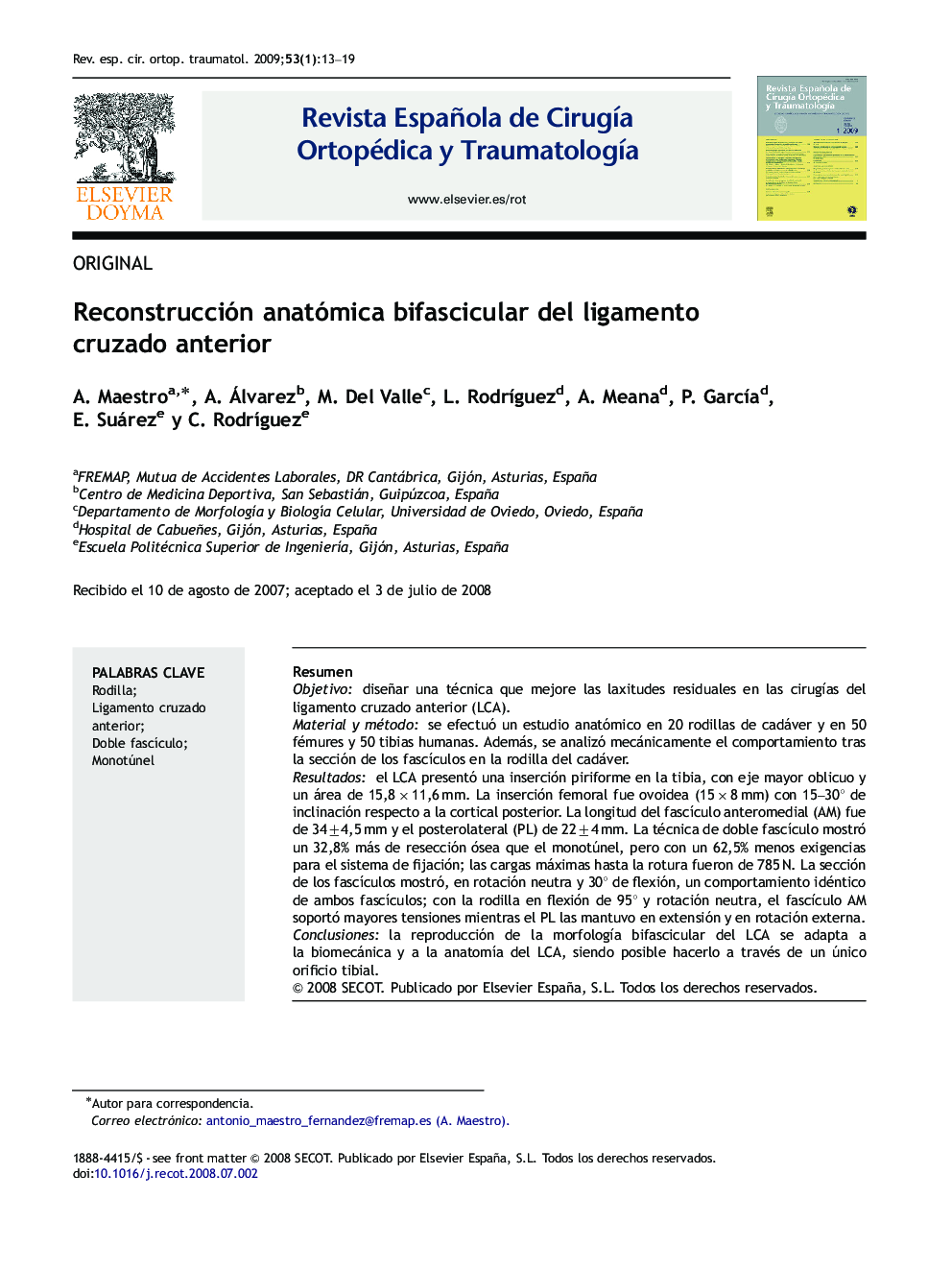| Article ID | Journal | Published Year | Pages | File Type |
|---|---|---|---|---|
| 4086499 | Revista Española de Cirugía Ortopédica y Traumatología | 2009 | 7 Pages |
ResumenObjetivodiseñar una técnica que mejore las laxitudes residuales en las cirugías del ligamento cruzado anterior (LCA).Material y métodose efectuó un estudio anatómico en 20 rodillas de cadáver y en 50 fémures y 50 tibias humanas. Además, se analizó mecánicamente el comportamiento tras la sección de los fascículos en la rodilla del cadáver.Resultadosel LCA presentó una inserción piriforme en la tibia, con eje mayor oblicuo y un área de 15,8×11,6 mm. La inserción femoral fue ovoidea (15×8 mm) con 15–30° de inclinación respecto a la cortical posterior. La longitud del fascículo anteromedial (AM) fue de 34±4,5 mm y el posterolateral (PL) de 22±4 mm. La técnica de doble fascículo mostró un 32,8% más de resección ósea que el monotúnel, pero con un 62,5% menos exigencias para el sistema de fijación; las cargas máximas hasta la rotura fueron de 785 N. La sección de los fascículos mostró, en rotación neutra y 30° de flexión, un comportamiento idéntico de ambos fascículos; con la rodilla en flexión de 95° y rotación neutra, el fascículo AM soportó mayores tensiones mientras el PL las mantuvo en extensión y en rotación externa.Conclusionesla reproducción de la morfología bifascicular del LCA se adapta a la biomecánica y a la anatomía del LCA, siendo posible hacerlo a través de un único orificio tibial.
PurposeTo design a technique Ahmed at reducing the incidence of residual laxity in anterior cruciate ligament (ACL) surgery.Materials and methodsAn anatomic study was performed in 20 cadaver knees and in 50 human femurs and 50 human tibias. In addition, a mechanical study was made of the consequences of sectioning the bundles in the cadaver knee.ResultsThe ACL presented with a tibial piriformis attachment, with an oblique greater axis and ana rea of 15.8×11.6 mm. The femoral attachment was egg-shaped (15×8 mm) with a 15–30° inclination with respect to the posterior cortex. The length of the anteromedial (AM) bundle was 34±4,5 mm and of the posterolateral (PL) bundle 22±4 mm. The double-bundle technique afforded 32.8% more bone resection than the single tunnel, but causing 62.5% less stress on the fixation system; maximum loading strength of 785 N. On being sectioned, both bundles showed, at neutral rotation and 30° flexion, identcal behaviors; with the knee at 95° flexion and neutral rotation the AM bundle had to withstand greater strains while the PL bundle had to withstand them in extension and external rotation.ConclusionsReproducing the double-bundle morphology of the ACL is a successful method that is well-adapted to the anatomy and biomechanics of the ACL and that can be carried out through a single tibial tunnel.
